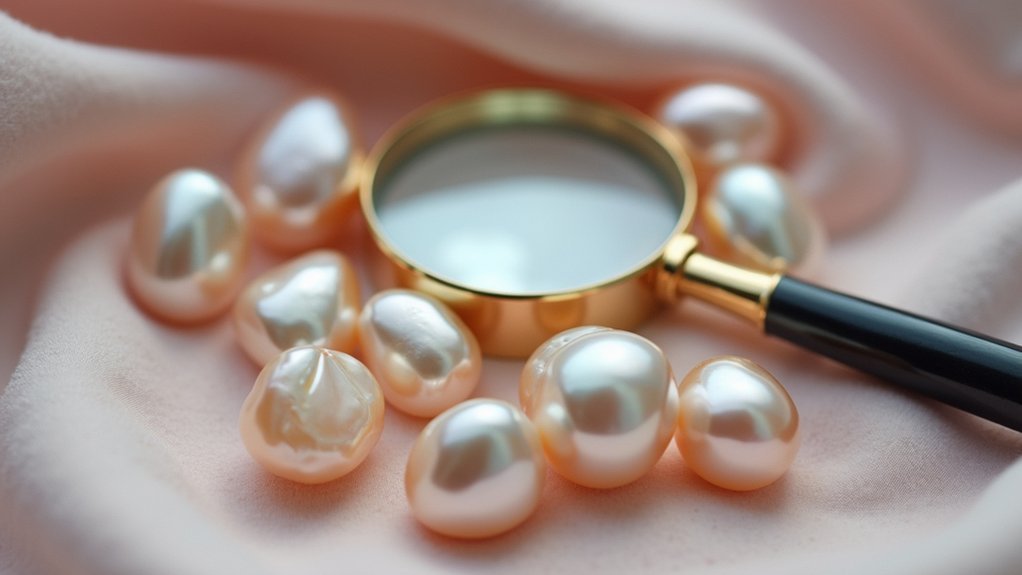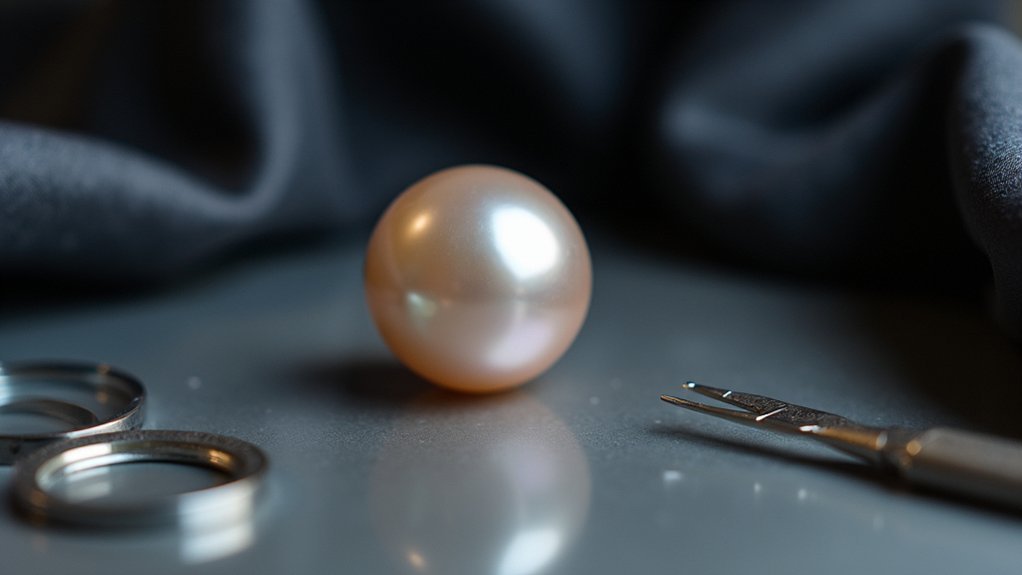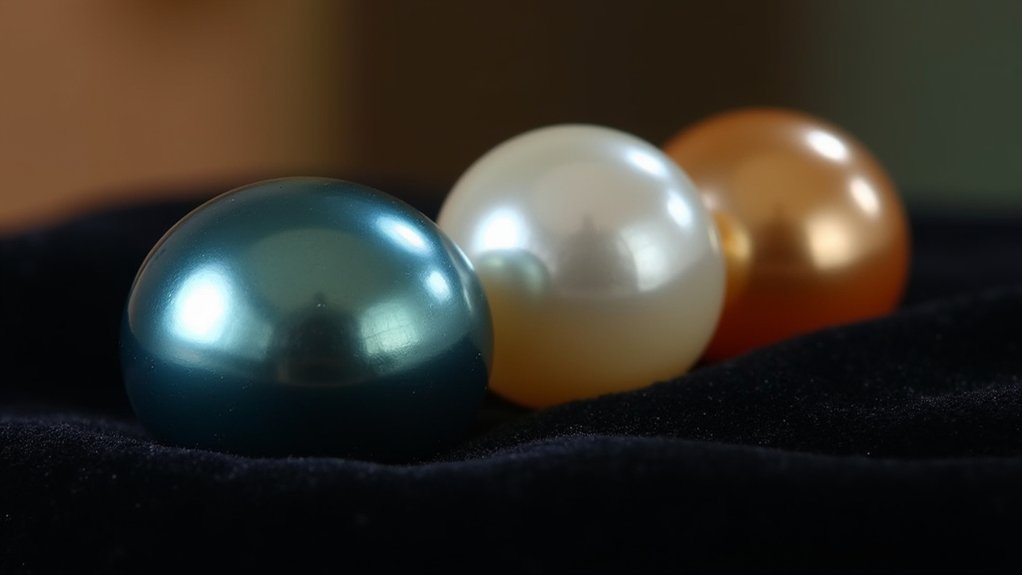You’ll achieve accurate pearl evaluation by mastering three fundamental assessment methods that professional gemologists rely on to determine quality and market value. First, conduct visual inspection and luster analysis under both fluorescent and natural lighting to assess surface reflections and brilliance. Second, evaluate surface quality by examining blemish type, size, and distribution across the pearl’s surface. Third, apply professional grading scales like A-AAA systems that consider cleanliness percentages, nacre thickness, and overall aesthetic appeal to establish precise quality ratings and market positioning.
Visual Inspection and Luster Analysis

Mastery of visual inspection techniques forms the foundation of accurate pearl evaluation, requiring you to examine each pearl’s surface quality and luster characteristics under proper lighting conditions.
During your quality assessment, you’ll look for surface blemishes and imperfections, with AAA grade pearls displaying 90-95% surface cleanliness.
AAA grade pearls showcase exceptional quality with 90-95% surface cleanliness, making blemish identification crucial during professional assessment.
Luster analysis focuses on light reflected from the pearl’s surface—you’ll want bright, sharp reflections indicating superior quality.
Nacre thickness directly impacts this brilliance, with 0.4mm or more creating deeper radiance in Akoya pearls.
When you evaluate pearls, use both fluorescent and natural lighting since each reveals different characteristics.
Fluorescent light exposes dullness while natural light enhances iridescence.
Surface Quality and Blemish Assessment
When examining pearl surface quality, you’ll assess the type, size, and distribution of blemishes that naturally occur during the pearl’s formation process.
Your blemish assessment determines the grading scale placement, with AAA Quality pearls requiring 95% clean surfaces and easily recognizable reflections. You’ll identify common imperfections like dents, score marks, and pin pricks that affect market value greatly.
Pearls graded as AA+ feature 90-95% clean surfaces, while AA pearls show 75-80% cleanliness, demonstrating how increasing blemishes reduce quality ratings.
Hanadama Akoya pearls represent exceptional surface quality standards, requiring 95% cleanliness or better to meet certification requirements.
You’ll notice that surface quality directly correlates with aesthetic appeal and pricing, making thorough blemish evaluation essential for accurate pearl assessment and fair market valuation.
Professional Grading Scale Evaluation

Professional pearl grading systems standardize quality assessment through thorough A-AAA and A-AAAA scales that evaluate luster, surface quality, nacre thickness, shape, and size as interconnected factors. When you’re examining pearls, you’ll encounter these evaluation methods that determine the pearl’s body value and grade classification.
| Grade | Surface Cleanliness | Nacre Thickness |
|---|---|---|
| AAAA Grade | 95%+ clean | 0.8mm minimum |
| AAA | 95% clean | Varies by type |
| AA+ | 90-95% clean | Standard |
| AA | 85-90% clean | Standard |
| A | Below 85% | Minimum acceptable |
The A-AAA system focuses on cleanliness percentages, while luster remains the most critical quality factor. You’ll find that AAAA grade pearls represent premium quality, requiring exceptional surface quality and substantial nacre thickness for ideal light reflection and durability.
Frequently Asked Questions
How to Evaluate Pearl Quality?
You’ll evaluate pearl quality by examining luster for deep, glowing reflections, checking surface cleanliness for minimal blemishes, appraising roundness, measuring size, and analyzing nacre thickness for durability.
What Is the Best Pearl Rating?
You’ll find AAA Grade Akoya pearls represent the highest standard rating, requiring 95% surface cleanliness. For absolute premium quality, you should seek Hanadama certification, which guarantees exceptional luster and nacre thickness.
How to Get Pearls Evaluated?
You’ll need to find certified gemologists or pearl specialists who use professional grading scales like A-AAA systems. They’ll assess luster, surface quality, and nacre thickness using specialized tools and provide detailed authentication reports.
Is There a Grading System for Pearls?
Yes, there’s no single universal grading system for pearls. You’ll find A-AAA scales for Akoya pearls and A-AAAA scales for other types, but standards vary considerably between different vendors and dealers.
In Summary
You’ll make confident pearl purchases when you’ve mastered these three evaluation methods. Start with visual inspection to assess luster quality, then examine surface blemishes closely. Don’t forget to reference professional grading scales for standardized comparisons. You’re now equipped with the essential tools to distinguish high-quality pearls from inferior ones. Whether you’re buying for investment or personal collection, these techniques will guarantee you’re selecting pearls that meet your standards and budget.





Leave a Reply